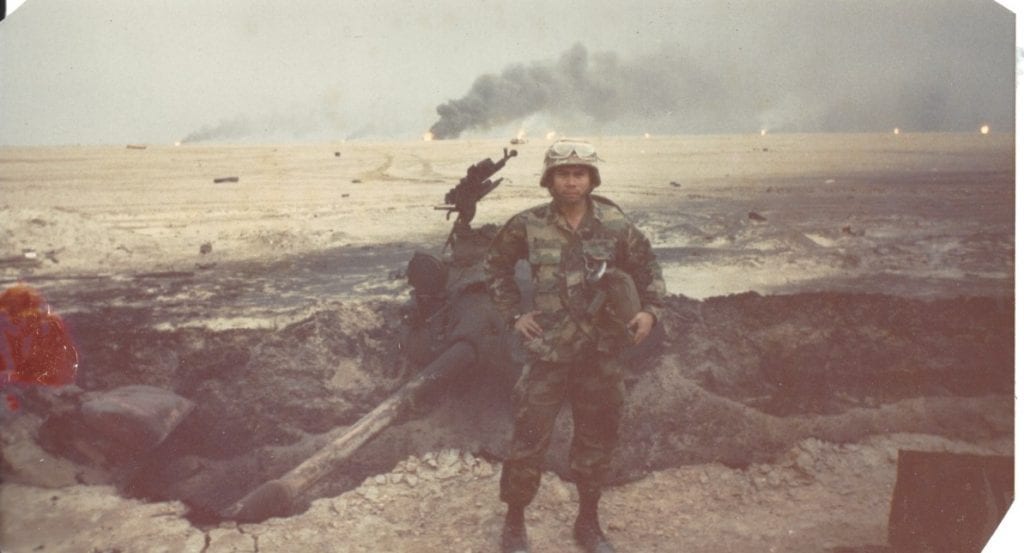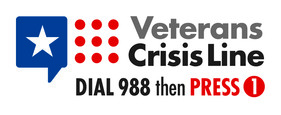
On 2 August 1990, Saddam Hussein’s Iraq invaded Kuwait. This act precipitated U.S. military involvement in the Persian Gulf. I was 2nd Brigade, 1st Infantry Division (Mechanized) Medical Non Commissioned Officer during the Persian Gulf War. Our brigade, also known as the Dagger Brigade, deployed from Fort Riley, Kansas with the rest of the division to Saudi Arabia in December 1990 as part of Operation Desert Shield. Our brigade was commanded by Colonel Anthony Moreno. Our brigade was composed of 2-16 Infantry Battalion, 3-37 Armor Battalion, 4-37 Armor Battalion, plus supporting units. Our brigade redeployed to Fort Riley, Kansas in May 1991. Our brigade prepared for possible combat, frequent rotations to the National Training Center, Fort Irwin, California familiarized our brigade soldiers with desert operations.
In 100-hour war, the Big Red One spearheaded by our brigade would cut its way through the initial Iraqi defenses, engage and destroy parts of at least four Iraqi divisions, fight a major tank battle in the middle of the desert, destroy hundreds of Iraqi combat vehicles, and capture thousands of Iraqi soldiers. At the end, our brigade was selected to be the security force for the Safwan Airfield where the negotiations between coalition forces and Iraqi leaders were held to finalize the ceasefire agreements.
On 8 November 1990 our brigade received notification that it would deploy to Southwest Asia. This came as no surprise, since our brigade began preparing for deployment by taking prudent steps at the end of August. Our unit commanders’ and first sergeants’ wives initiated a family support group focusing on the eventuality of going to war.
Our brigade focused on desert fighting and the Iraqi as the enemy. Our leaders talked realistically and candidly to the troops about casualties and death. Our soldiers honed their Nuclear-Biological-Chemical skills.
As Christmas approached we expected to spend the holidays in Saudi Arabia. Our division advance party departed prior to Christmas, but our brigade did not begin flying until 30 December 1990. Our unit commanders allowed soldiers with accrued leave and sufficient money a short leave in addition to one already taken at the beginning of December. All soldiers returned for deployment, no soldiers deserted, Morale was high.
The rain was pouring early morning when our brigade arrived in the port of Damman, Saudi Arabia 1 January 1991. Contrary to popular belief, it rains in the desert. In fact during January it rained two-thirds of the time. After a 24 hour period jet lag from the 22 hour trip, our brigade began training, since the brigade’s equipment had not arrived.
Our brigade commander continued to emphasize breaching operations and battle drills. Our brigade used micro armor and schematic of an Iraq complex obstacle, drawn on target cloth by one of the platoon sergeants, to chalk talk the breach. Soldiers had the opportunity to input their ideas. Everyone understood the mission’s difficulty and probability of high casualties. The mine plow crews began to develop possible breaching techniques, medical evacuation and support was covered, and the crews trained first aid.
Our brigade stressed the combat lifesaver program to augment the medics. Each crew had at least one trained combat lifesaver. Although the thought of death and injury weighed on everyone’s mind, talking about it was beneficial and easing the stress. It also reinforced the real concern leaders had for their soldiers’ welfare.
Early on 17 January 1991 our brigade received word that the air war had begun. Operation Desert Shield became Desert Storm. The horizon was aflame with tracers and missile signatures.
We knew that the quickest way home was through Iraq. Many uncertainties existed. When would the ground war begin? Who would become a casualty? What would combat be like? Anxiety increased. When daylight came we moved to a range to confirm the zero on the main guns. The soldiers diligently performed their duties, since their lives depended on perfection.
On the morning of 24 February 1991 our brigade spearheaded the armored attack into Iraq, by creating a massive breach in the enemy defenses just inside Iraq. The breach was designed to allow other VII US Corps units to pass through the initial Iraqi Army forces and drive deep into Iraq. In the initial assault we broke through the Iraqi 26th Infantry Division, destroyed it, and took over 2,500 prisoners. In the initial stages of the operation, that is just before, during, and after the breach made in our brigade’s sector, the problem we faced was not so much enemy fire as it as the large number of Iraqi soldiers surrendering to our troops. By darkness of the 24th, we had not only conducted a major breach into the Iraqi defensive zone, we had also penetrated 30 kilometers to Phase Line Colorado and captured 600 enemy troops. The following morning, we pushed on and had a quick skirmish with the Iraqi 110th Infantry Brigade and scooped up its commander.
We quickly battled through the Iraqi 48th Infantry Division capturing its commander and destroying its command post. By the end of the day, we had cut through and destroyed the Iraqi 25th Division as well and rounded up hundreds of enemy prisoners who had no fight left in them at this time and had reached Phase Line Utah where we took up a temporary defensive position. Ahead, however, the vaunted Republican Guard was known to be positioned at a place on a map called Objective NORFOLK.
On 25 February 1991 our brigade soldiers displayed extraordinary discipline which saved lives. However, a task force soldier died of wounds when he picked up a mine.
On the night of 26 February 1991 we collided with the Republican Guard’s Tawalkana Division and the 37th Brigade, 12th Armored Division. It was a division-level battle and before dawn we had destroyed both enemy formations. Enemy losses included 40 tanks and 40 infantry fighting vehicles. We continued to exploit our success on the 27th by capturing and pursuing the demoralized Iraqi forces for the rest of the day.
Following the Battle of Objective NORFOLK, we raced ahead to assist in cutting the Iraqi lines of retreat from Kuwait City. As we approached the highway moving north out of Kuwait City and into southern Iraq, we destroyed scores of enemy vehicles and took thousands more prisoners as our division’s units advanced. About 2000, 27 February 1991, we seized the main highway leading north out of Kuwait and barred the Iraqis’ escape.
By the next morning, the rest of the division had taken up positions along the highway completely blocking any further movement by the Iraqi Army. The ceasefire was announced at 0800 on 28 February 1991 and the war was essentially over. Soon after, our brigade was ordered to the vicinity of Safwan Airfield in Iraq. There the Dagger Brigade was tasked with securing the site where on 3 March 1991 the negotiations were held between coalition forces and Iraqi leaders to finalize the ceasefire agreements.
The first week of April our brigade began the final stage of redeployment. We moved to Al Khobar to prepare equipment for shipment. The first 3 days were long and arduous as crews worked on around the clock cleaning vehicles to custom’s standards. Within a week all the brigade ‘s vehicles and equipment had passed inspection. On 9 May 1991 2nd Brigade returned to Fort Riley, Kansas.
Mission accomplished!











